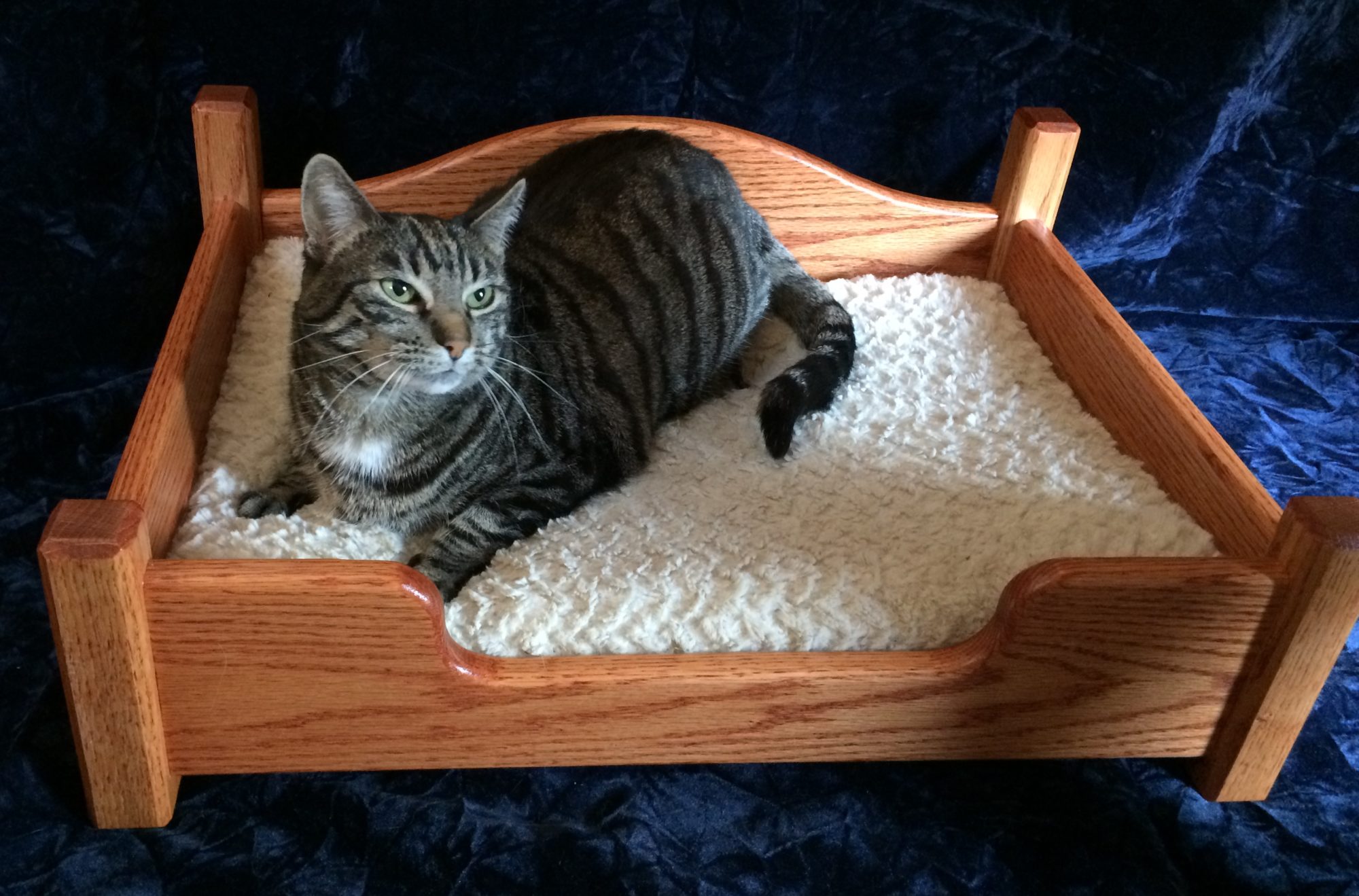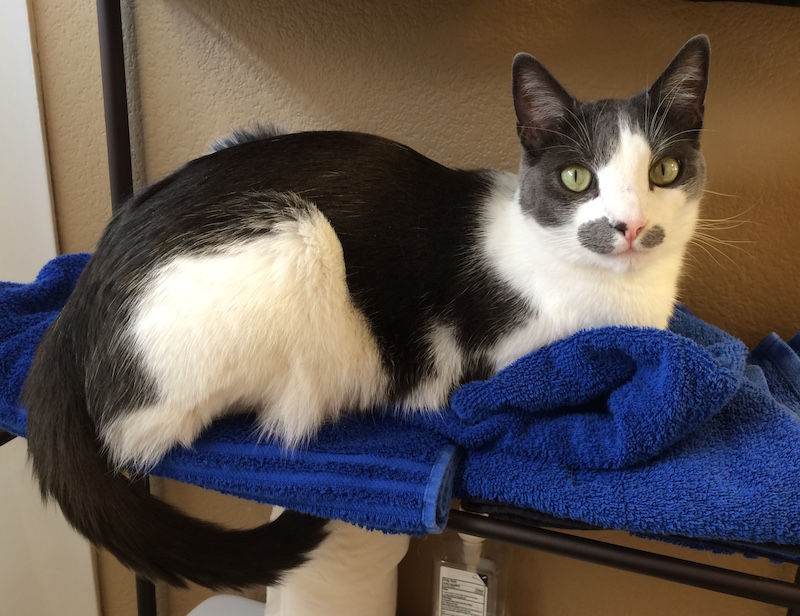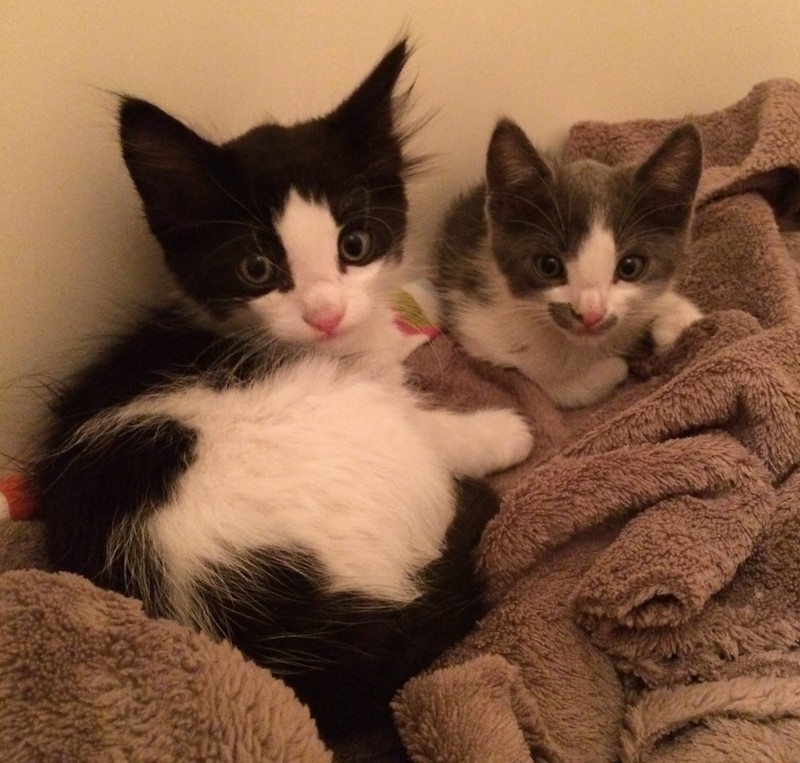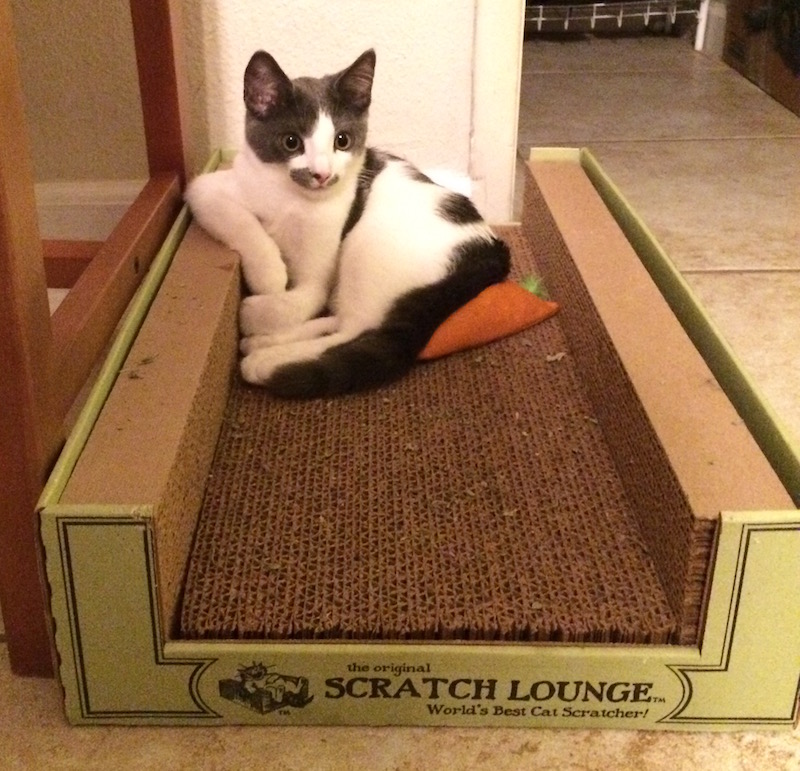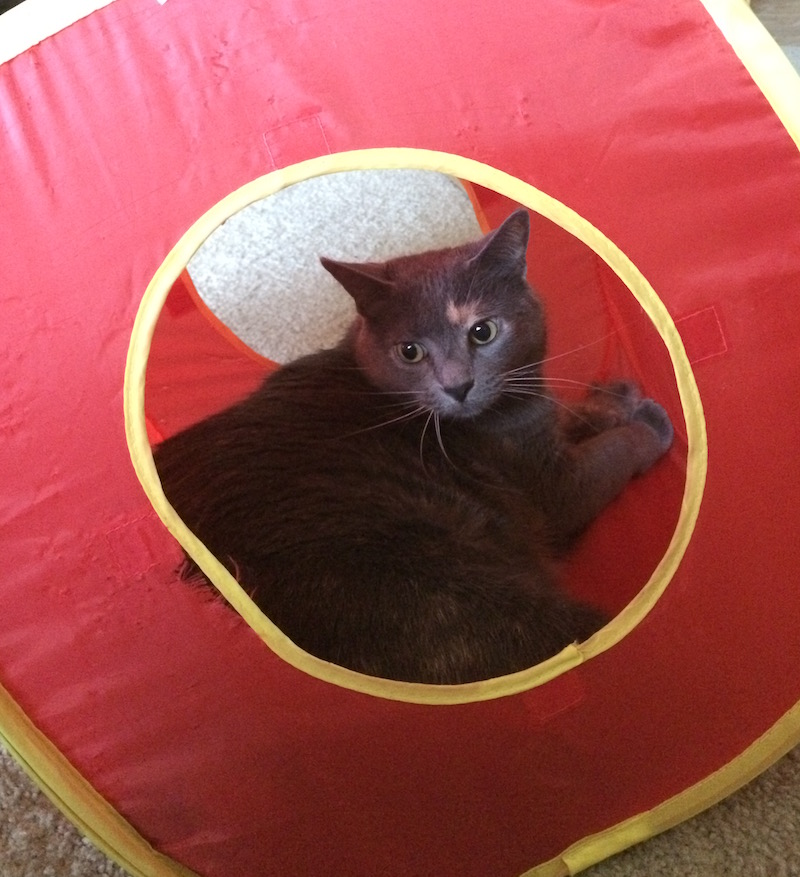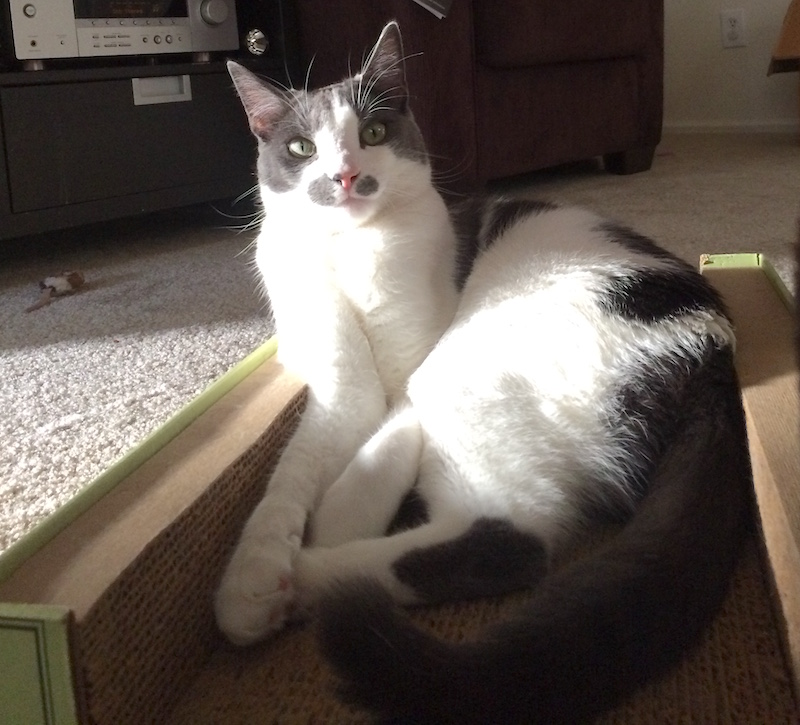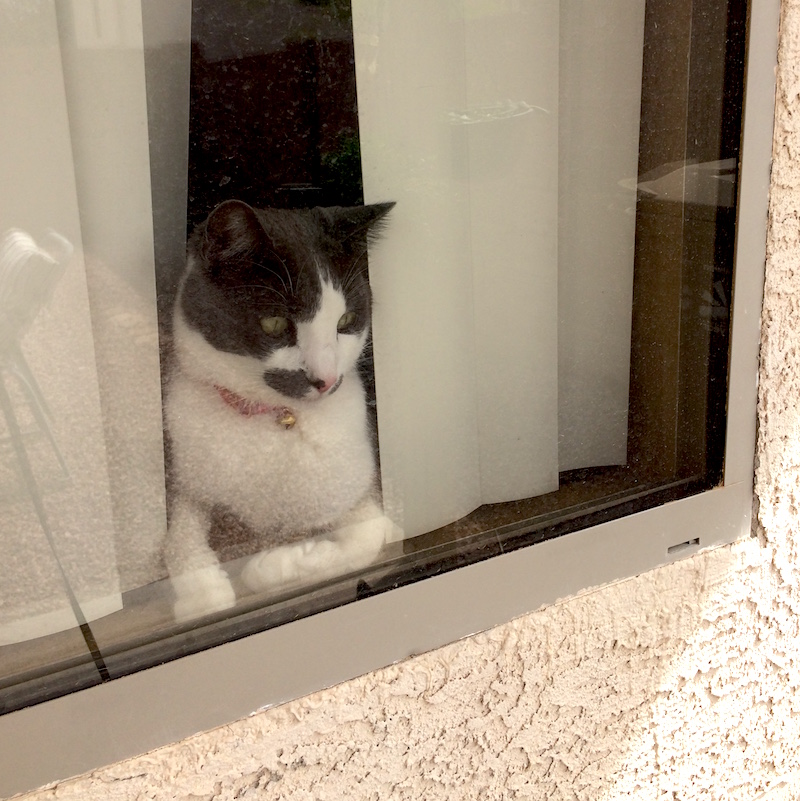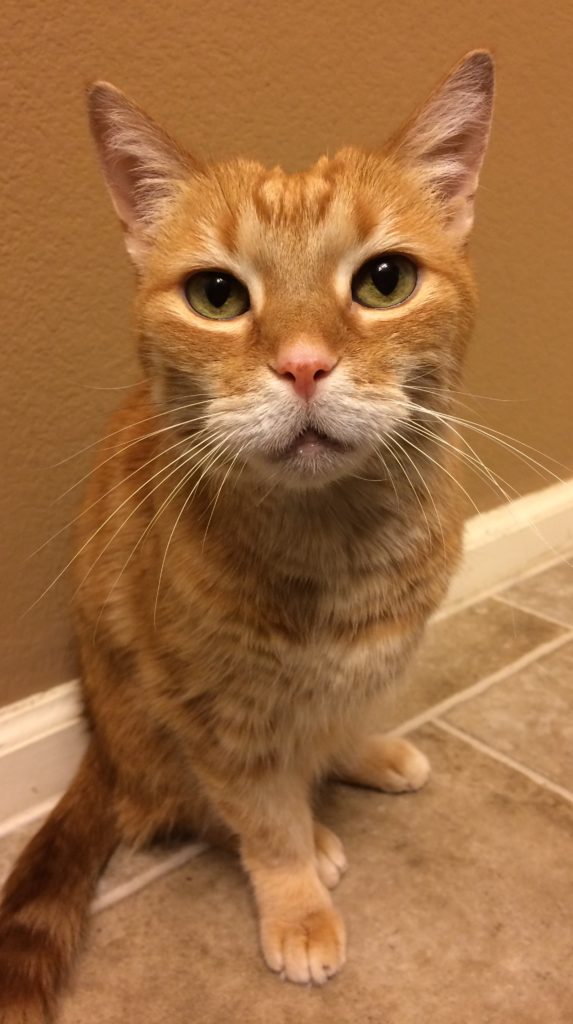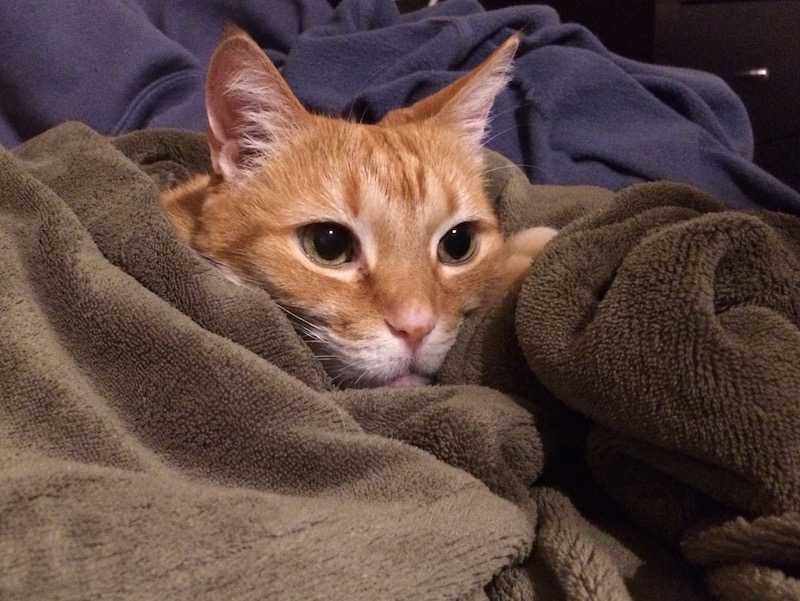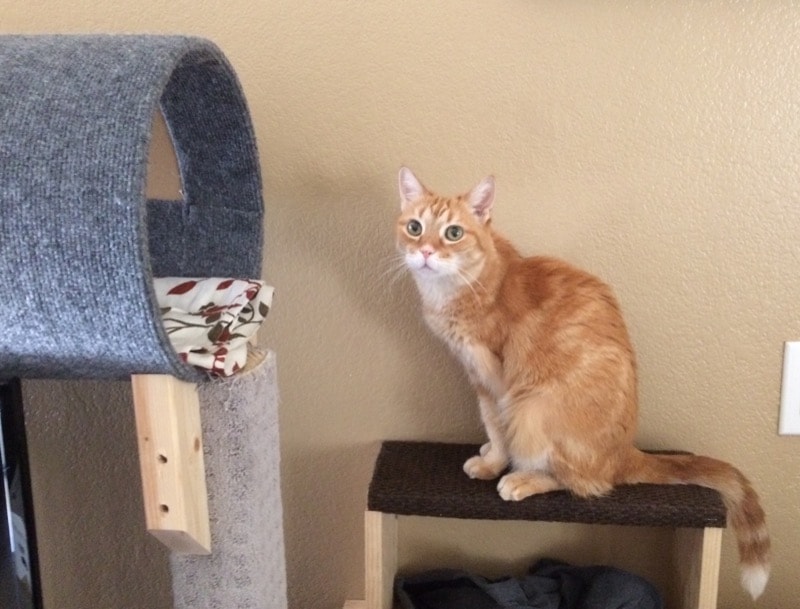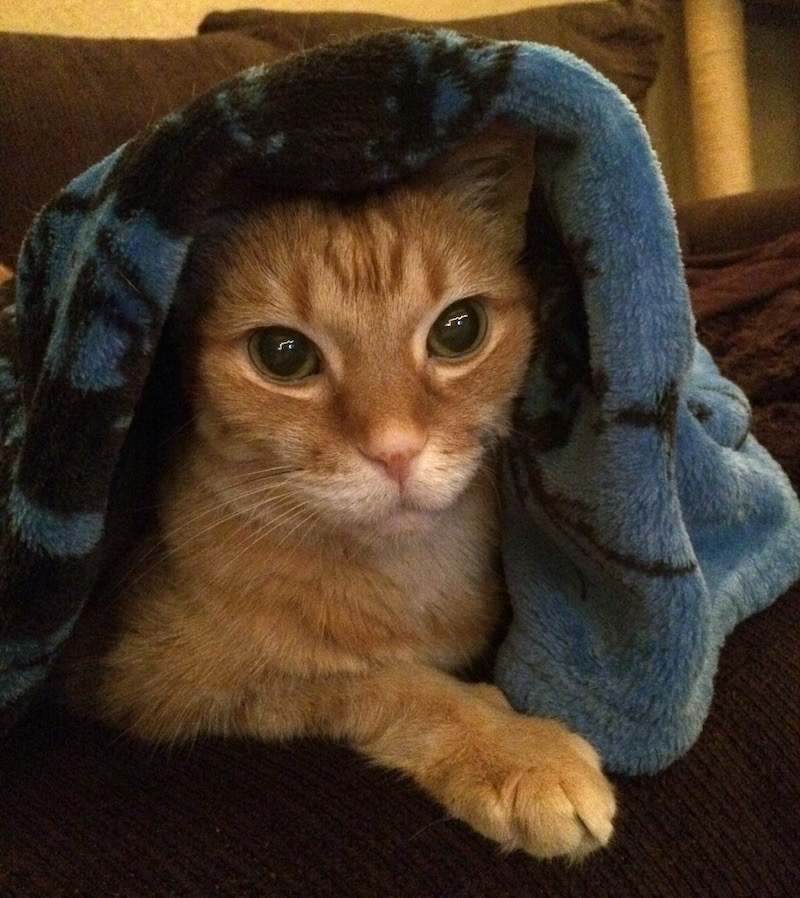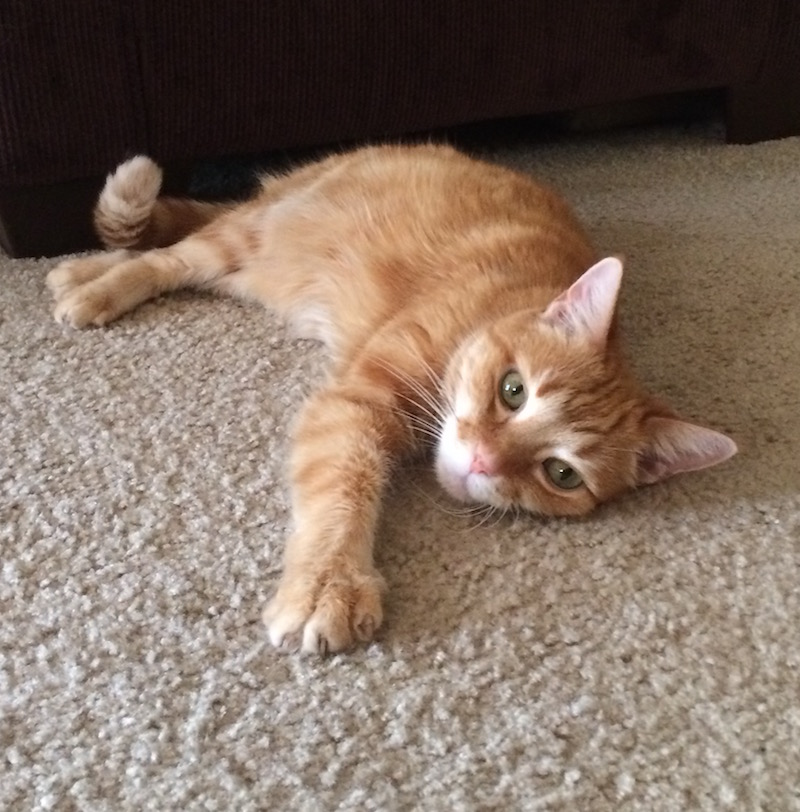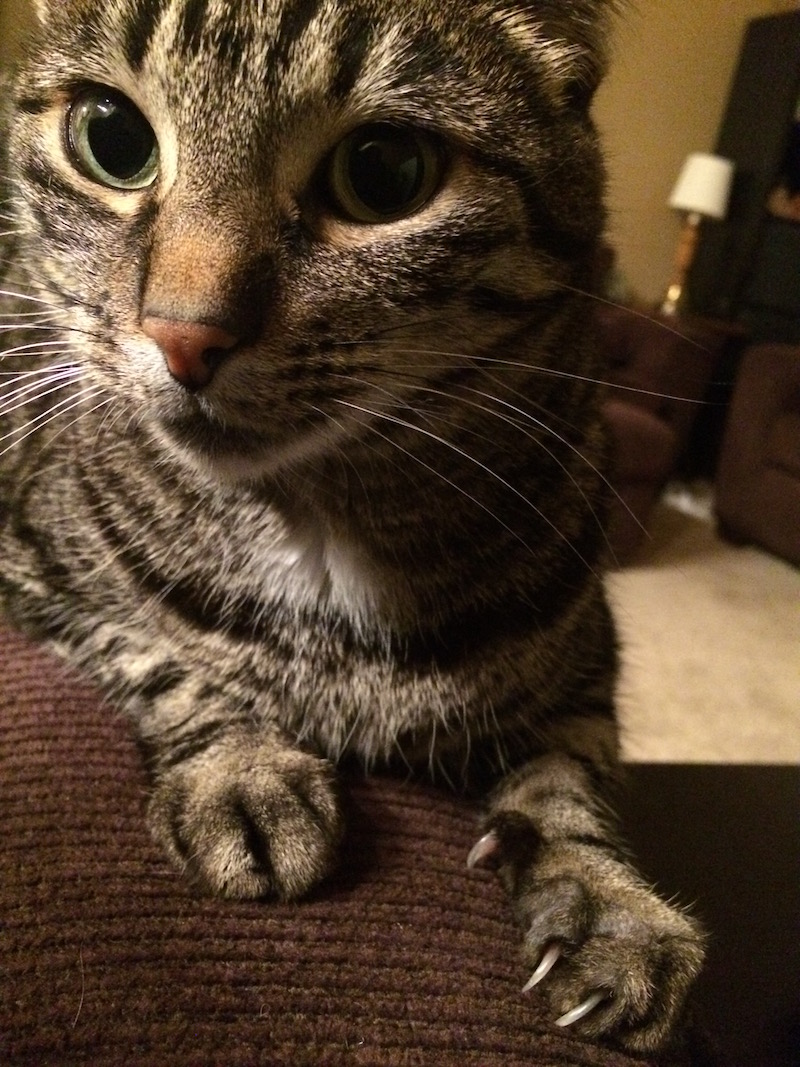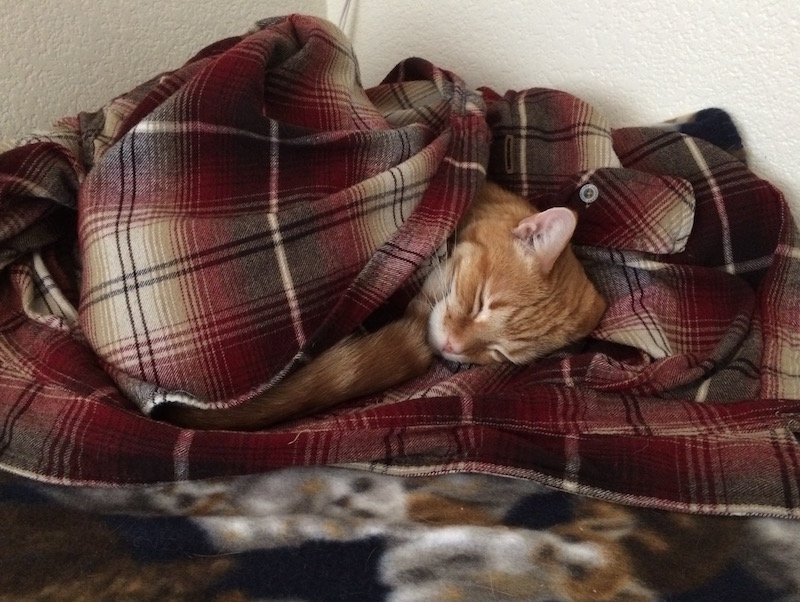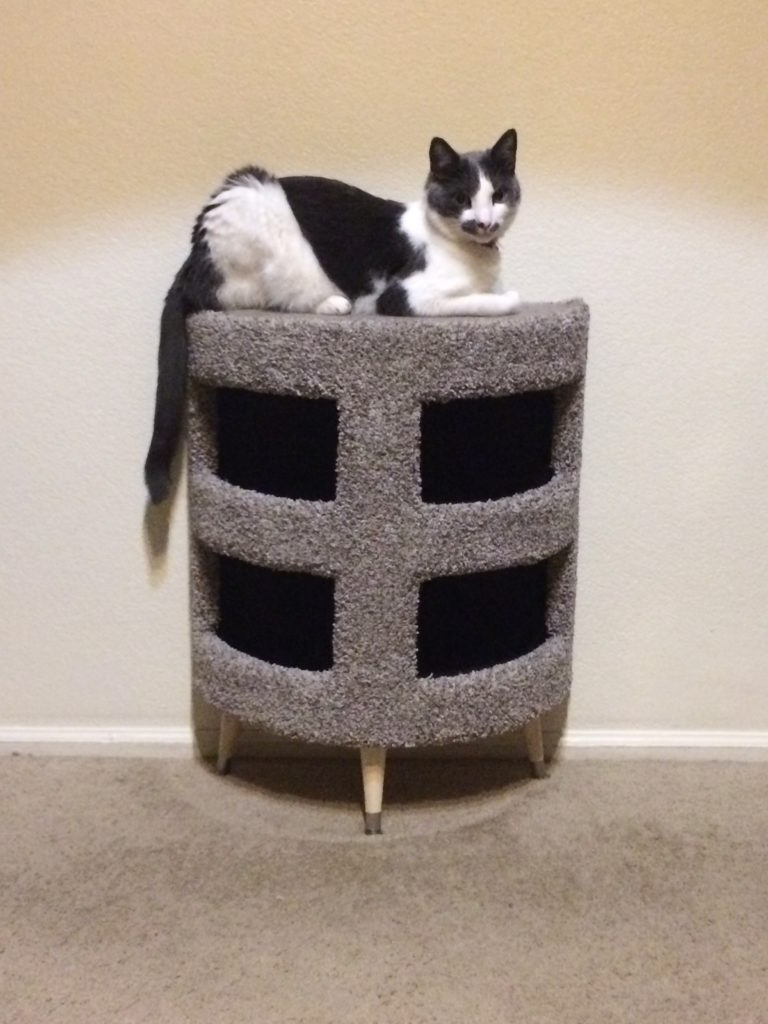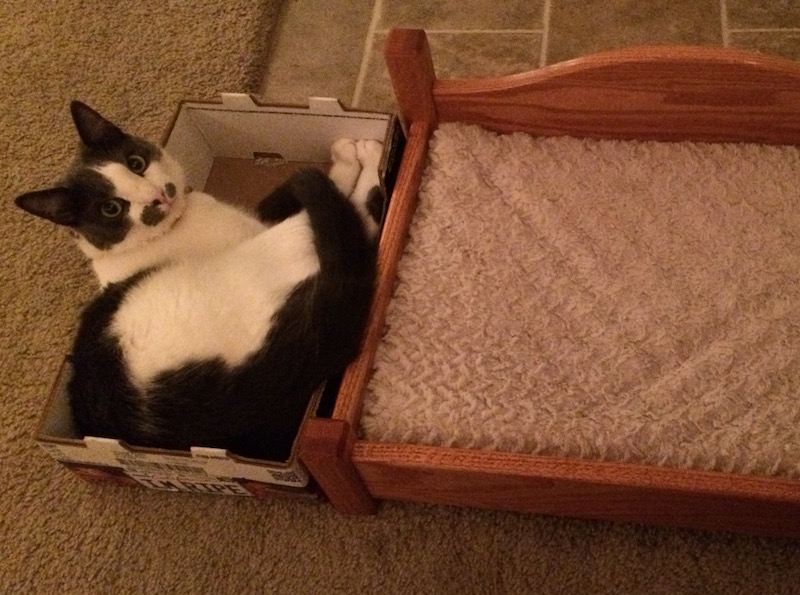If you lack the square footage for elaborate cat furniture, there are plenty of ways to help your cat branch out (and up), and make you feel like he’s got more room than you.
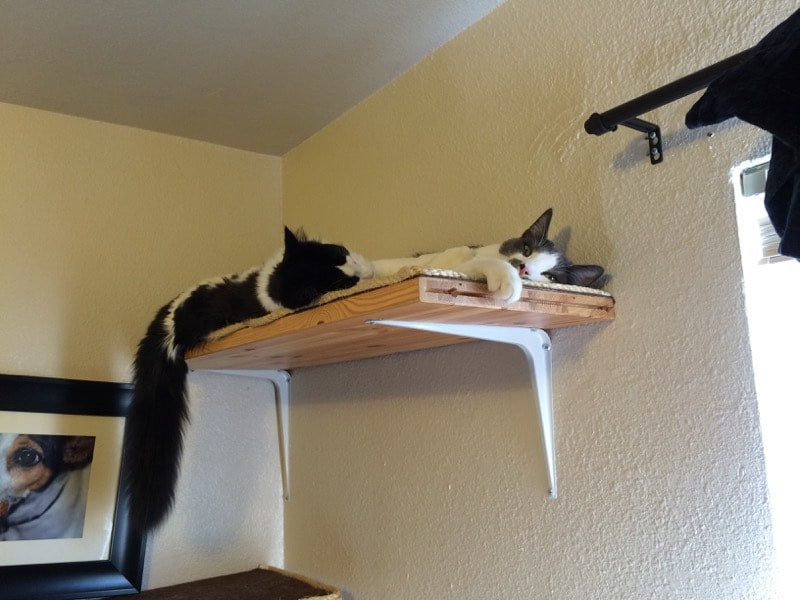
The Whisker Shop is a participant in the Amazon Services LLC Associates Program, and some links in this post are affiliate links. This means that there will be no additional cost to you if you shop at Amazon.com using these links, but we will receive a small percentage of those purchases as a commission. The opinions in this post belong to The Whisker Shop, and we only recommend products we would use or have used ourselves.
Tip #1: Think vertically! This is really the best way to maximize a cat’s space. Adding shelves, or rearranging stuff on existing shelves to make room for cats, is like adding a cat magnet for most cats. Keep in mind the size and age of your cats: smaller or older cats may need additional shelves or a chair moved so they can get on and off the shelf safely. Make sure the shelves can hold your cats’ weight and the force of their jump, to avoid unnecessary injuries and home repairs.
You can have us design custom cat shelves, or buy something premade like these Better Homes and Gardens 4-Cube Organizer and Bookcase. If you buy something taller than it is wide, be sure to also get some kind of wall-mounted fastener like these Anti-Tip Furniture Wall Straps used for childproofing and earthquake-proofing.
You may also want to try this door-mounted set of cat shelves, although you may need to add additional hardware (screws or nails) for more stability.
Tip #2: Think multi-purpose! Dedicated cat furniture is beautiful and helps your cat feel like she really owns her space. But sometimes you just don’t have the floor space to dedicate to something like our beautiful round retro cat condo. Adding something like a Clamp-on Desk Shelf to an existing desk or table will let you keep working while your cat supervises from above. If you already have a desk with a shelf, consider clearing off some space and adding an inbox for your cat. Sometimes an empty box lid is all that’s needed to entice a cat to use a new space, or you can try something much cozier, like a MidWest Deluxe Bolster Pet Bed.
Tip #3: Maximize space! If you’ve got extra leg room under your desk, or under a table where you spend a lot of time working, your cat may want to join you (and get in your way). Try tucking a cozy place to call their own near your feet (but not so near where you might kick them!), like the Zen Den Cat Hideout. We like the Zen Den because the top comes off for easy access in case of emergencies, and it folds flat for travel or storage. It’s also great for cats who prefer to be closer to the ground.
